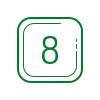TRT which is short for Testosterone Replacement Therapy, supports men with low testosterone. Hormone therapy boosts energy, helps improve a person’s mood, increases muscle growth and brings back sexual desire.
However, experiencing hair loss is one of the main worries for people. After starting TRT, a small number of men may notice their hair getting thinner. Others believe there has been no change.
Don’t Wait, Reclaim Your Vitality – Click here to Book Your TRT Consultation Now!
So what’s the true cause of this? Is direct hair loss a result of TRT? Or is it just the people who already have a thinning hairline that it affects? This article examines the effects of TRT on hair, risks that make people more vulnerable, and measures to avoid hair loss while using the therapy.
Understanding the Relationship Between TRT and Hair Loss
It’s necessary to know what testosterone does in our bodies before accusing TRT of causing hair loss. Men who start testosterone treatment experience this more greatly.
What Is Testosterone Replacement Therapy (TRT)?
Treatment involves taking drugs that raise testosterone in men who have less than usual. Low levels of testosterone may result in feeling tired, being depressed, having less interest in sex, weak muscles and problems concentrating.
TRT can be taken through:
- Injections into the muscle
- Gels or patches placed on the skin
- Pellets inserted under the skin
- Tablets placed in the mouth
Each method affects how hormones behave in your body. This also changes how hair follicles react. TRT raises testosterone levels, but it can also raise another hormone called DHT. DHT is linked to hair thinning in men.
The Role of DHT in Hair Loss
DHT stands for dihydrotestosterone. It is enzymes named 5-alpha-reductase that turn testosterone into DHT prior to use by the body. DHT is needed for men’s growth, though it may weaken and damage your hair.
DHT has an effect on the hair follicles found on the scalp. Family history of baldness may cause DHT to harm and reduce the size of men’s hair follicles. This means that the hair becomes thin and does not grow fully. As time goes by, the hair inside the follicles stops growing. It is referred to as miniaturization.
TRT increases testosterone, which can also raise DHT. If your hair follicles are sensitive, this may speed up hair loss. Baldness usually begins at the temples and crown.
How TRT May Contribute to Hair Loss
TRT alone does not always cause hair loss. But under certain conditions, it may play a role. Knowing how TRT affects hair can help you understand the risks.
Genetic Predisposition: The Deciding Factor
Your genes decide whether TRT will affect your hair. If baldness has occurred in your mom’s family, you might experience the same issue.
Here’s how this works:
- Your hair follicles may be sensitive to DHT.
- TRT raises testosterone and DHT, which affects these sensitive follicles.
- Balding may speed up even if it had already started slowly.
If you don’t have this genetic trait, TRT is less likely to harm your hair. TRT may reveal your risk, but it doesn’t cause baldness on its own.
Sudden Hormonal Fluctuations
When you begin TRT, hormone levels can change quickly. This sudden shift may lead to temporary hair loss. This type of loss is called telogen effluvium.
In telogen effluvium:
- Hair enters the resting phase too early.
- This leads to shedding all over the scalp.
- It usually goes away once hormones stabilize.
This kind of hair loss is different from male pattern baldness. It’s often temporary and does not focus on the temples or crown.
Form and Dosage of TRT Matters
Different forms of TRT affect the body in different ways. The dose and method can change how much DHT your body makes.
- Injections may cause sudden spikes in testosterone, leading to more DHT.
- Gels or patches keep levels steady, possibly lowering DHT spikes.
- Higher doses often result in more DHT, which can hurt sensitive follicles.
If you lose hair on TRT, the method or dose may be the reason, not the therapy itself.
Who Is Most at Risk of Hair Loss from TRT?
Not everyone on TRT loses hair. But certain men face a higher risk based on specific traits.
Genetic Sensitivity to DHT
If you carry genes tied to male pattern baldness, your risk is higher. These genes:
- Cause early hair thinning.
- Speed up baldness when DHT levels rise.
- Make it harder to regrow hair
Look at your family history. Hair loss from your mother’s side can be a strong sign.
Age and Baseline Testosterone Levels
Younger men often lose hair faster after starting TRT. They have more hair to lose and active follicles that respond to DHT.
- Men with higher natural testosterone may see a bigger jump in DHT.
- Older men may not notice much change because hair loss already happened.
Duration of TRT Usage
The longer you use TRT, the longer your hair is exposed to high DHT. This can lead to slow, ongoing thinning, even if it does not happen right away.
How to Prevent or Minimize Hair Loss During TRT
TRT does not have to cause baldness. You can take steps to protect your hair while still using this therapy.
Use DHT Blockers (With Medical Supervision)
Medicines like finasteride and dutasteride stop testosterone from turning into DHT.
- Finasteride can lower DHT by 60–70%.
- Dutasteride may cut it by more than 90%.
Some side effects of these drugs could be a decrease in sex drive or a change in mood. Before you start, make sure to discuss it with a doctor.
Consider Topical Treatments
Putting minoxidil on your scalp helps encourage hair growth. It helps by increasing blood circulation.
- It keeps hair in the growing phase longer.
- It helps with crown thinning and general shedding.
- It works well with TRT and finasteride under supervision.
Newer topical versions of finasteride reduce side effects by targeting the scalp directly.
Adjust TRT Dosage and Delivery Method
You don’t need to quit TRT to save your hair. Sometimes, a small change in your plan helps.
- Lower doses may still give benefits with less DHT.
- Switching to gels or creams gives steady hormone levels.
A hormone doctor can help balance TRT with hair health.
Incorporate Natural DHT Inhibitors
Some natural items may lower DHT slightly. They include saw palmetto, pygeum, and pumpkin seed oil.
- These have fewer side effects.
- You can use them along with other treatments.
- They also support prostate health.
In addition, green tea extract, nettle root and zinc could also give you some benefits.
Maintain a Nutrient-Rich Diet
Hair reflects your overall health. Lack of nutrients can make hair loss worse during TRT.
Important nutrients include:
- Biotin: Helps make keratin.
- Vitamin D: Supports hair cycle.
- Zinc: Keeps hormones balanced.
- Iron: Prevents loss from anemia.
- Omega-3s: Fight scalp swelling.
Eating a balanced diet or taking the right supplements can make your hair stronger.
Should You Avoid TRT Because of Hair Loss?
Hair loss is a concern. But it should not stop you from getting TRT if you really need it.
Weighing Cosmetic Concerns Against Health Benefits
Losing hair can feel upsetting. But low testosterone causes bigger problems—like constant tiredness, low desire, and weak muscles. TRT can improve all of these. Sometimes, the benefits to your health are more important than keeping your hair.
Hair Loss Isn’t Inevitable with TRT
Not every man who uses TRT loses his hair. The result depends more on your genes, the dose, and how the therapy is managed. Careful planning reduces the risk.
Proactive Hair Management Can Minimize the Risks
You don’t have to avoid TRT. You can act early to protect your hair. Use DHT blockers, apply topical treatments, and eat a healthy diet. These steps help you keep your hair while still using TRT.
TRT May Reveal, Not Cause, Existing Hair Loss Tendencies
TRT does not start baldness on its own. It brings out what your body is already programmed to do. If your genes include baldness, TRT may make it happen faster. It does not create the issue from scratch.
Personalizing Your TRT Plan for Hair and Health
You can build a TRT plan that works for both your health and hair. Work with a doctor who understands hormone therapy. They can help adjust your dose or delivery method to reduce hair side effects.
Conclusion
TRT can help men feel better in many ways. It improves mood, energy, focus, and strength. But many fear losing hair. The truth is, TRT may raise DHT, which can affect men with baldness genes. Still, this is not always the case.
There are ways to protect your hair while using TRT. You can lower DHT, change your dose, or use topical help. You can also eat better and take hair-friendly supplements. With proper care, TRT and hair health can go together.
Start TRT With Confidence at The KIF:
- Free Consultation – No charge. No pressure. Just expert answers.
- First Time? Our $249 New Patient Package includes an online consult and one-month of testosterone.
- Need More? Our $149 Monthly Subscription includes a doctor check-in and your monthly dose.
- Regular Support – Keep your plan going with expert care, updated treatment, and monthly delivery.
Feel strong again without giving up your hair. Your TRT journey can be safe, smart, and personal. It all starts with a free consultation.
 Since 2021, Kif offers a streamlined platform to get a medical marijuana card online. We have served more than 45K patients across the United States. Sign Up Now to get the right to use medical cannabis for your health condition without any delay.
Since 2021, Kif offers a streamlined platform to get a medical marijuana card online. We have served more than 45K patients across the United States. Sign Up Now to get the right to use medical cannabis for your health condition without any delay.
























